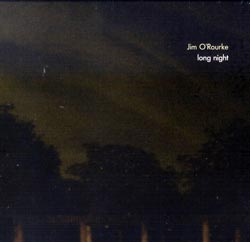
O'Rourke's pedigree across dozens of musical genres is unquestioned, and extraordinarily versatile. He's played with such icons of alternative rock as Sonic Youth and The Red Krayola; produced, amongst other notable artists, Faust, Stereolab, and Jim Fahey; was a member of the still underrated avant-rock groups Gastr del Sol and Brise Glace; forged tenure with experimental outfits Mirror, Indicate, Organum, and Illusion of Safety; and has been a general agent provocateur cloaked in numerous guises. O'Rourke's been credited as a guitarist for the most part, however erroneous such a statement is: he's a jack-of-all-trades, a devout multi-instrumentalist, sonic collagist, lap-topper, and organizer of all manners of sonic bric-a-brac. In short, he's experimental music's renaissance man, able to leap tall noises in a single bound, as pliable as mercury and every bit as slippery to pin down.
Despite O'Rourke's wide remit in rock circles, his work bridging the various style gaps crisscrossing electronica remains quite vibrant, some of which hit the bricks at a time when being an avantist carried more than a whiff of elitism. His early works for the Australian Extreme label, Tamper (just reissued on Drag City) and Remove the Need, retain hallmarks of originality and vigor that easily surpasses much of the cavalier softwaring barely passing muster for music these days. How refreshing then to see O'Rourke returning to the flavor of those early works with Long Night, a recording where tonal color is massive, tropes such as melody and rhythm are absent, and sound-scaping becomes the lynchpin. An epic, two-disc set of two gargantuan tracks, this finds O'Rourke satisfyingly back in deep drone mode, but even keeping his earlier exploits in mind, this fiercely minimal work makes those Extreme discs feel like fifty-piece orchestras by comparison.
Establishing a fairly simple, single drone (whether its sound originates from guitar or laptop is unclear), O'Rourke allows process to rule the day, shape-shifting and sculpting the resulting waveform much like the jet-stream shears clouds. Ebbing, flowing, the variable sound column altering so slightly it's virtually imperceptible, what arises is a persistent "ambient" music that can be both maddeningly intrusive and strangely luxurious. Tweaking a base hum that seems to decay over the piece's length, massaging trills the aural hue of buzzing fluorescent bulbs, courting dissonance running the breadth of the harmonic scale, O'Rourke manages to make near-cacophony sound positively angelic minus any trite aphorisms. O'Rourke's antecedents don't just reside on his sleeve, they practically beg noting: Eliane Radigue, Phill Niblock and David Behrman (to whom the works are dedicated) figure heavily in his template, and the better for it. Acquitting himself admirably, it's nice to have O'Rourke back in the fold, perched high on the drone throne.
Comments and Feedback:



More Recent Reviews, Articles, and Interviews @ The Squid's Ear...


|

